Table of Contents
The importance of proper lighting in badminton
Badminton court lighting is crucial for athletes’ visual experience and the overall quality of the game. Proper lighting design can not only improve athletes’ reaction time and accuracy but also enhance the viewing experience for spectators.
Unique lighting demands for badminton
As a high-intensity, fast-paced sport, badminton places extremely demanding requirements on court lighting. Athletes need bright lighting to clearly observe high-flying shots and delicate movements, while avoiding glare.

To ensure fair play, the Hawk-Eye system also places higher demands on lighting, requiring uniform and high-color rendering index lighting to capture detailed athlete movements.
The significance of lighting design

- Excellent court lighting design can significantly enhance athletes’ comfort and subsequently improve their performance.
- Spectators can fully immerse themselves in the game, just like watching a movie in a cinema.
- A stable and long-lasting lighting system can reduce failures and maximize field usage.
Understanding Lighting Standards and Regulations
Organizations such as the International Commission on Illumination (CIE), the Chartered Institution of Building Services Engineers (CIBSE), and Sport England have established detailed regulations and standards for indoor and outdoor sports lighting, driving the advancement of the lighting industry.
International Lighting Commission (CIE)
The International Commission on Illumination (CIE) is the world’s leading authority on lighting standards, providing guidelines and procedures for the development of international and national lighting standards.
Specific standards for sports lighting
The CIE has recommended three levels of illuminance (in lux) for various sports venues, based on the specific requirements of each sport.
| Lux Levels Required | Class 1 | Class 2 | Class 3 |
|---|---|---|---|
| Alpine skiing | 100 | 30 | 20 |
| Athletics | 500 | 200 | 100 |
| Badminton/Squash | 750 | 500 | 300 |
| Baseball | 750 | 500 | 200 |
| Football (Soccer) | 500 | 200 | 75 |
| Hockey | 500 | 250 | 200 |
| Horse racing | 200 | 100 | 50 |
| Ice Hockey Rink | 750 | 500 | 300 |
| Playing court | 500 | 200 | 75 |
| Rugby | 500 | 200 | 75 |
| Swimming | 500 | 300 | 200 |
| Tennis - indoor | 750 | 500 | 300 |
| Tennis - outdoor | 500 | 300 | 200 |
National and regional standards
Several professional sports organizations have also established specific standards and recommendations for badminton court lighting.
CIBSE Lighting Guide 4
| Class | Horizontal illuminance | Colour rendering index | |
|---|---|---|---|
| Eav (lx) | Eav (lx) | ||
| I | 750 | 0.7 | 60 |
| II | 500 | 0.7 | 60 |
| III | 300 | 0.7 | 20 |
CTV group B
Note 1: No luminaires should be positioned in that part of the ceiling directly above the playing area.
Note 2: The reflectance values of court-side fabrics should not be greater than 0.5 for walls and 0.6–0.9 for ceilings. Background colours of blue and green are preferable.
Note 3: The Badminton Federation may require particular specifications for competition and international provision.
National Governing Bodies
NGB recommendations 30% vertical illumination.
Badminton World Federation
The BWF recommend 1000 lux for international
competition.
Badminton England
Badminton England recommend 500 lux for all other levels of play.
Key Lighting Parameters for Badminton Courts
Technical parameters such as lumens, color temperature, and color rendering index in sports lighting significantly impact the overall lighting effect and should not be overlooked.
Illuminance
- Horizontal illuminance: The average horizontal illuminance on the field should not be less than 300lx, and it is recommended to reach 500lx or above, with a uniformity of not less than 0.7.
- Vertical illuminance: Vertical illuminance is an important indicator for judging the visibility of a sports space. Generally, the vertical illuminance is required to be more than half of the horizontal illuminance.
Color temperature
A color temperature of approximately 5000K will provide a daylight-like environment, enhancing the visibility of the white shuttlecock for athletes.
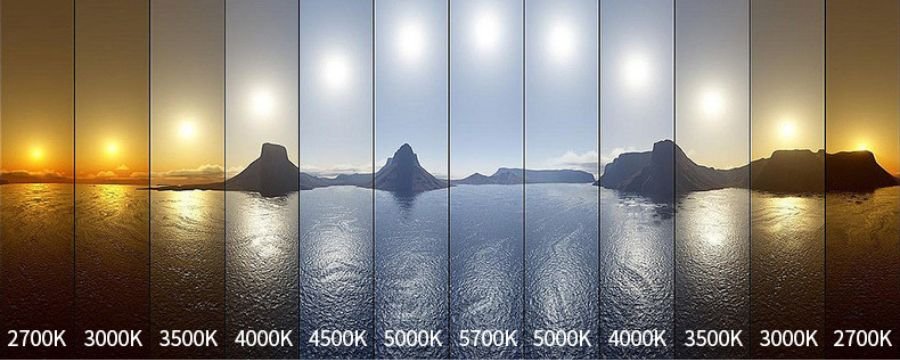
Color rendering index (CRI)
To ensure more accurate color rendering, lighting fixtures for badminton courts should have a Color Rendering Index (CRI) of 80 or above, providing a more realistic visual experience.

Glare
Glare level is quantified by the Unified Glare Rating (UGR), with lower values indicating less glare. Glare refers to the sensation of discomfort, annoyance, or loss of visual performance caused by a luminance in the field of view that is greater than the eye can adapt to. There are three types of glare:
- Direct glare: The effect produced when a light source is within 30 degrees above or below and 75 degrees to the left or right of the eye’s horizontal plane, and is viewed directly or peripherally. Examples include looking directly at the sun, fluorescent lamps, or oncoming headlights at night.
- Reflected glare: Glare caused by light reflecting off a surface into the field of view, making it difficult to see objects in front. Examples include reflections from mirrors, blackboards, desktops, and books.
- Contrast glare: Also known as background glare. This occurs when a bright background behind a target object makes it difficult to see the object due to the high contrast. The greater the contrast, the more eye strain is produced.
Flicker
Although flicker is often imperceptible to the naked eye due to its high frequency, it can still have a subtle impact on vision. Flicker in a lit space can be captured by smartphone cameras or professional video cameras, compromising the quality of live recordings and televised broadcasts. Therefore, it’s crucial to select flicker-free lighting fixtures.

Lighting design and layout
The design of indoor sports lighting is a highly specialized task that requires a designer with extensive expertise. The following are some valuable knowledge points for your reference and learning.
Solid-state lighting technology
LED lighting, powered by blue LED chips and low-voltage direct current, offers a photoelectric conversion efficiency exceeding 90%. This cutting-edge technology provides unparalleled flexibility in adjusting color temperature, color rendering index, and shape, while generating significantly less heat and ensuring enhanced safety.
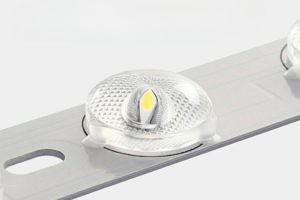


Additionally, LED lights are more energy-efficient and have a longer lifespan compared to traditional lighting options, making them an environmentally friendly choice.
Luminaire selection
We recommend using glare-free gymnasium lights for badminton courts. These lights are specifically designed for medium and small-sized sports venues, and are particularly suitable for high-altitude ball sports such as badminton, tennis, and volleyball.


Within vertical lighting spaces, they effectively prevent glare, providing uniform and soft lighting to ensure adequate and even illumination of horizontal spaces.
Layout and distribution
The layout and distribution of badminton court lighting fixtures must adhere to strict regulations, including requirements for illuminance, uniformity, and color temperature, to meet the needs of professional competitions and athlete performance.
Typical badminton court lighting configuration
I. Recommended: The lower edge of the luminaire should be 4-5 meters vertically above the ground
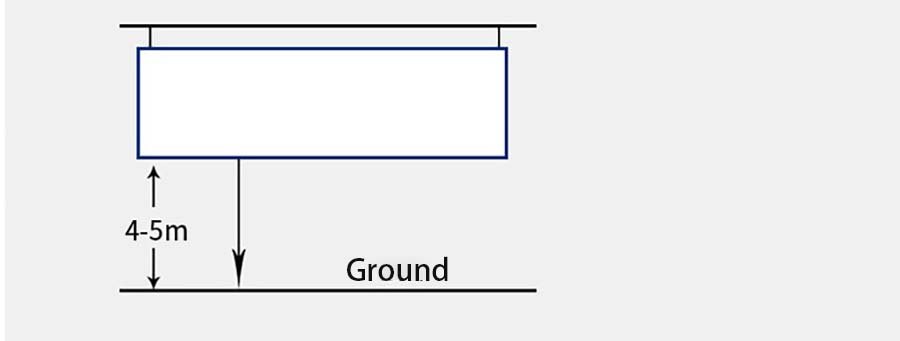
II. We need to find a suitable location to install 8 units of 1200*600, 160W lights in two rows on either side. The exact layout will depend on the specific site.


III. Actual installation light distribution profile


Through careful design, the system has achieved all performance indicators in both real-world and simulation tests.
Below are various badminton court lights with different power outputs and forms, along with our recommended layout options for your reference.
single-sided wall-mounted

60W single-sided wall-mounted
16 lights, mounted 4-5 meters high, will illuminate the field.

80W single-sided wall-mounted
A field illuminated by 14 fixtures mounted at a height of 5-6 meters.

120W single-sided wall-mounted
A field illuminated by 10 fixtures, mounted at a height of 5-6 meters.

160W single-sided wall-mounted
Eight fixtures, mounted at a height of 6-7 meters, provide illumination for the field.
single-sided pendant mount

60W single-sided pendant mount
It is recommended to install 16 fixtures at a height of 3-4 meters.

80W single-sided pendant mount
It is suggested that 14 fixtures be installed at a height of 5-6 meters above the field.

120W single-sided pendant mount
We suggest installing 10 fixtures, 5-6 meters high, for the field.
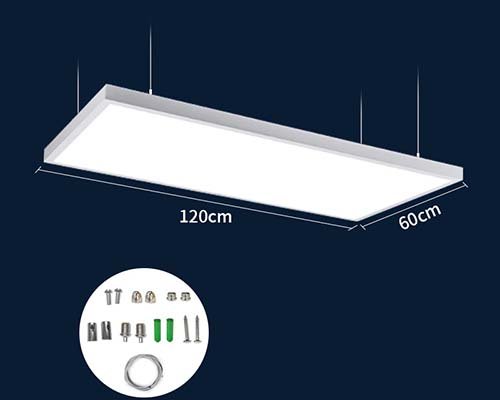
160W single-sided pendant mount
The optimal installation height is between 6 and 7 meters.
double-sided pendant mounted

60W double-sided pendant mounted
A field illuminated by 8 fixtures mounted at a height of 4-5 meters.

80W double-sided pendant mounted
The field is lit by 7 fixtures installed 5-6 meters above the ground.

120W double-sided pendant mounted
A field illuminated by 5 fixtures mounted at a height of 5-6 meters.

160W double-sided pendant mounted
Four fixtures, mounted at a height of 6-7 meters, provide illumination for the field.
Honeycomb mesh - single-sided wall-mounted model

Honeycomb mesh - single-sided wall-mounted model 60W
The venue will be equipped with 16 lamps, installed at a height of 4-5 meters.
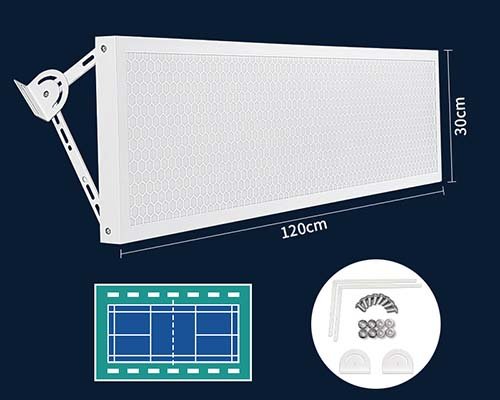
Honeycomb mesh - single-sided wall-mounted model 80W
The 14 lamps will be installed at a height of 4 to 5 meters throughout the venue.
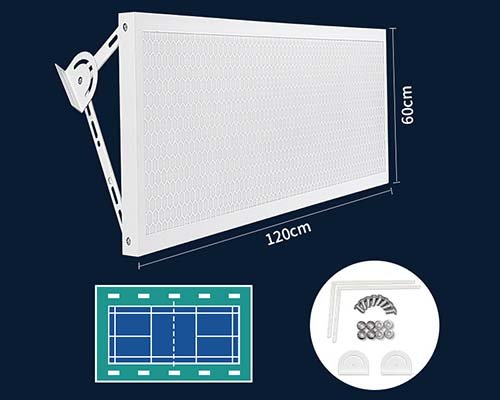
Honeycomb mesh - single-sided wall-mounted model 120W
Ten lamps will be installed around the field, each at a height of approximately 5-6 meters.

160W double-sided pendant mounted
The field will be illuminated by 8 lamps, placed around the perimeter at a height of about 6-7 meters.
Honeycomb mesh - single-sided pendant mount Model

Honeycomb mesh - single-sided pendant mount Model 60W
The installation height is between 3 and 4 meters.

Honeycomb mesh - single-sided pendant mount Model 80W
Mounted at a height of 5-6 meters.

Honeycomb mesh - single-sided pendant mount Model 120W
It is recommended to install at a height of 5-6 meters.
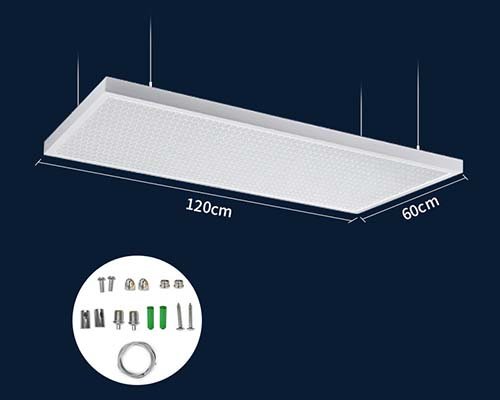
Honeycomb mesh - single-sided pendant mount Model 160W
We recommend installing at a height of 6-7 meters.
Honeycomb mesh-double-sided pendant mounted Model

Honeycomb mesh - double-sided pendant mounted Model 60W
Eight lamps can be installed around each field, at a height of approximately 4-5 meters.

Honeycomb mesh - double-sided pendant mounted Model 80W
Each field will be illuminated by 8 lamps, placed at a height of about 5-6 meters.

Honeycomb mesh - double-sided pendant mounted Model 120W
Each field will be equipped with 5 lights, positioned at a height of 5-6 meters for optimal illumination.

Honeycomb mesh - double-sided pendant mounted Model 160W
Four lamps can be installed on each field, each at a height of approximately 6-7 meters.
Control systems & Emergency lighting system
With an intelligent lighting control system, dimming, timing, and scene control can be easily achieved.
To ensure the safety of the premises, emergency lighting and backup lighting systems should be equipped according to the different levels of the venue to meet the lighting needs in emergencies.
Case Studies
Over the years, LEDBLOC has accumulated extensive experience and provided mature lighting solutions to numerous domestic and international venues, successfully completing multiple projects.
Lighting fixture installation showcase
A display of various types of lighting fixtures and their installation methods.

Showcase examples of well-designed badminton courts
The following case studies showcase suspended lighting systems designed to provide uniform, glare-free illumination in professional and formal competition venues. These systems typically employ a grid of high-power LED fixtures suspended at a specific height to achieve optimal lighting levels and color rendering.


The lighting system employs a combination of suspended and wall-mounted LED fixtures to provide uniform illumination throughout the venue, with intelligent controls for customized lighting scenarios.


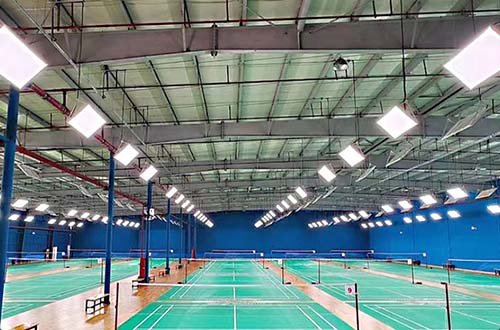

FAQ for New Users & Solutions
One common challenge in lighting layout is non-uniform illumination, where some areas are too bright while others lack sufficient light. To address this issue, the following aspects should be improved:
- Lamp Consistency: Ensure that all lamps are from the same batch and have consistent color temperature, shape, and power to avoid uneven lighting caused by lamp differences.
- Lamp Density: The density of lamp installation should be reasonable, avoiding excessive sparseness. Insufficient number of lamps will result in inadequate lighting and fail to achieve uniform illumination.
- Installation Height: The installation height of lamps should meet the requirements. Generally, the installation height of sports field lamps should be above 4 meters to ensure sufficient light diffusion.
It is recommended to conduct IES photometric testing on lamps before installation. This helps optimize lamp layout, improve lighting performance, and reduce the likelihood of rework.
To effectively address glare issues, LEDBLOC has introduced a badminton court light equipped with a honeycomb anti-glare mask. This direct-downward honeycomb lens design effectively prevents discomfort caused by light shining directly into the eyes. The lens features a unique honeycomb light-emitting surface, where hexagonal cells create a layered diffusion effect, ensuring a more comfortable visual experience.


Additionally, the luminaire's adjustable angle allows for precise beam adjustment during installation, further enhancing glare
For optimal lighting conditions, it is recommended to select LED lighting products with a color rendering index (CRI) exceeding 80 and a correlated color temperature (CCT) of 5000K. These specifications ensure accurate color rendition and a daylight-like appearance.
Selecting products that are built to last, from trusted manufacturers, can save you money on replacements and maintenance in the long run.
Common Lighting Design Software
1. DIALux
Features: Powerful, free, widely used, suitable for both indoor and outdoor lighting design.
Functions: Illuminance calculation, glare assessment, lighting environment simulation, rich luminaire library.
Target users: Lighting designers, architects, engineers.www.dialux.com

2. AGi32
Features: Realistic rendering, supports various light source types, good compatibility with CAD software.
Functions: Ray tracing, global illumination, radiosity, light source editing.
Target users: Designers with high requirements for rendering effects. lightinganalysts.com

3. Relux
Features: User-friendly interface, easy to operate, suitable for various lighting design projects.
Functions: Illuminance calculation, glare assessment, energy analysis, rich luminaire library.
Target users: Beginners and experienced designers. relux.com

4. Autodesk Revit
Features: BIM software, closely integrated with architectural design, suitable for architectural lighting design.
Functions: Lighting system modeling, illuminance analysis, energy simulation.
Target users: Architects, architectural engineers. servex-us.com

5. IESVE
Features: Professional photometric calculation software, suitable for luminaire design and testing.
Functions: Luminous distribution curve plotting, luminous flux calculation, glare assessment.
Target users: Luminaire designers, lighting engineers.www.iesve.com

We can perform a basic calculation based on the lighting fixtures we recommended and your provided floor plan. You can search for similar fixtures on Amazon to get a general idea of retail prices. The median price of these similar products can serve as a reasonable estimate for your purchase.
Conclusion
This article provides a comprehensive overview of badminton court lighting, offering valuable insights for industry professionals. When selecting a lighting manufacturer, contractors and distributors can significantly reduce costs and enhance project success by partnering with a reliable supplier.
Badminton court lighting manufacturer
LEDBLOC has been specializing in the production and supply of indoor sports lighting for over a decade, accumulating extensive experience in this field.
A professional Badminton court lighting manufacturing plant
Equipped with a professional indoor lighting manufacturing facility and both automated and semi-automated production lines, we are capable of completing any production task or order.

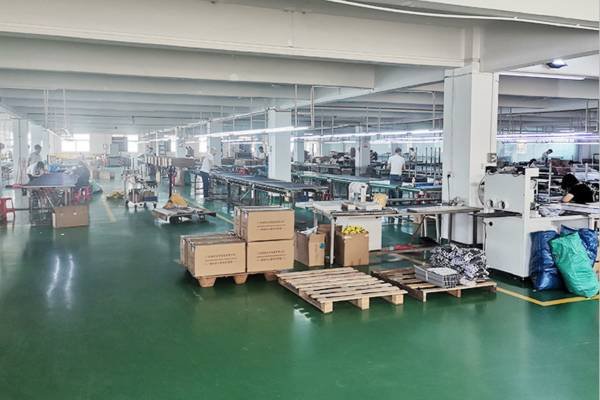

High quality assurance
With a robust quality management system and years of experience, we ensure that every luminaire is flawless.





